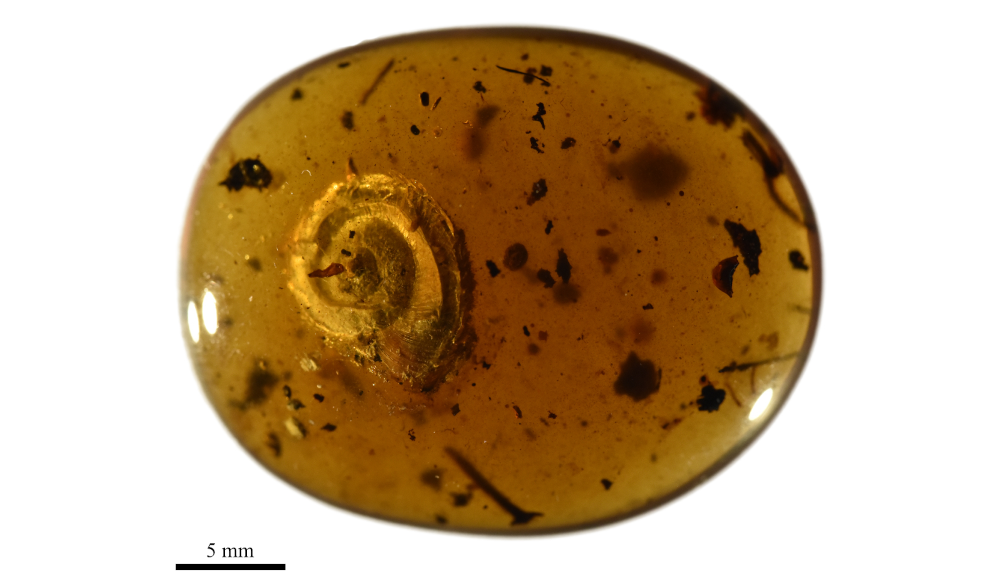A new species of snail with hair has been discovered in a piece of amber from Myanmar, dating back to 99 million years ago during the Cretaceous period. Amber is considered a time capsule in paleontology, as it preserves fragile organisms over millions of years, providing a glimpse into the Earth’s past. In the past, scientists have discovered an extinct relative of squid, a flower from the Cretaceous period, and the mold pigs, a previously unknown animal group, in amber. Researchers from the Senckenberg Research Institute and Natural History Museums, led by Dr. Adrienne Jochum, have now discovered a hairy snail in a piece of amber from Myanmar, which they named Archaeocyclotus brevivillosus.
The newly described species of snail was found in a Cretaceous amber mine in the Hukawng Valley in Myanmar and was collected before 2017. The fossil snail is 26.5 millimeters long, 21 millimeters wide, and 9 millimeters high. It has short hairs that line the outer edge of the shell and bundle up at the shell opening. The name of the snail, Archaeocyclotus brevivillosus, is derived from the Latin words brevis, meaning short or small, and vill?sus, meaning hairy or shaggy. In the same piece of amber, the researchers also discovered eight species from the family of tower snails, including six snails with fine hairs on their shells. The hairs may have helped the snails to cling to plants or regulate their body temperature by collecting tiny water droplets.
The discovery of the hairy snail in amber provides valuable insights into the evolution of snails and their adaptation to different environments. The presence of hairs on the shells of snails has been observed in several families of land snails, indicating that the feature has evolved independently multiple times. The study of ancient organisms preserved in amber continues to provide new information about the Earth’s past and the evolution of life on our planet.










